As the UK government has instructed the nation to stay at home and only venture out for specific, essential reasons in light of the Coronavirus (Covid-19) situation, many of us are being encouraged to park our cars if we can. Some owners of Toyota hybrids might be wondering what will happen to their car during long periods without use, particularly when it comes to the level of charge in the batteries.
The reassuring news is that no difficult car maintenance is necessary. However, there are some tips that, if followed, can help ensure your Toyota remains in tip-top condition during an extended layoff.
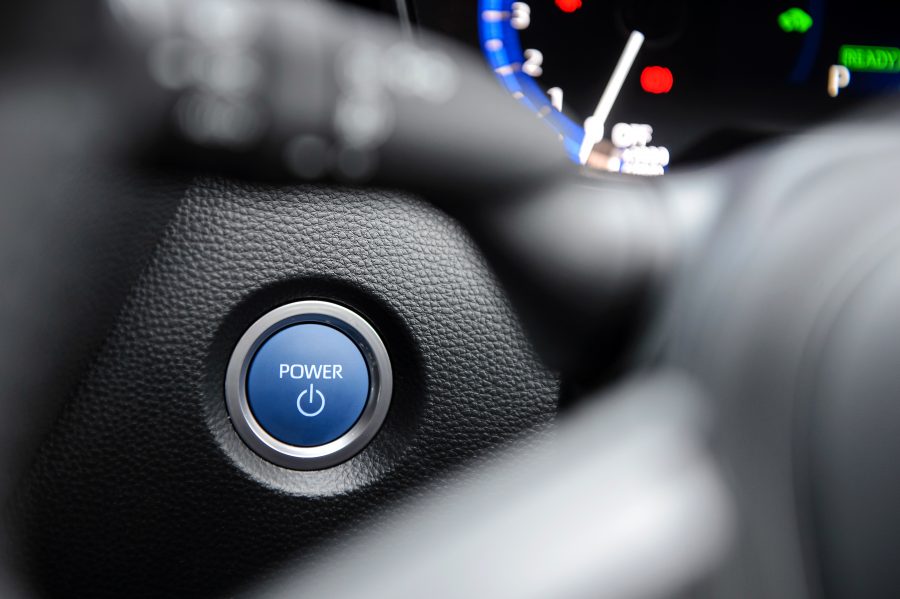
To recap, Toyota hybrids generally contain two batteries: a 12-volt battery (which powers systems such as the headlamps and audio) and a high-voltage hybrid system battery (which supplies the power to start the combustion engine and drive the electric motors).
The simplest way to maintain charge in both of these batteries is to simply go through the normal start procedure: press the ‘Start’ button with your foot on the brake and ensure the ‘Ready’ light is illuminated on the dashboard (you don’t have to keep your foot on the brake thereafter, but ensure your vehicle’s transmission is in ‘Park’ and the parking brake is engaged).
We recommend you put the car in ‘Ready’ mode for about 60 minutes before switching it off again and repeat the process at least once a week, providing you can carry out this procedure while adhering to the government’s advice regarding social distancing and Coronavirus (Covid-19). Please do not leave your car unattended when it is in ‘Ready’ mode.
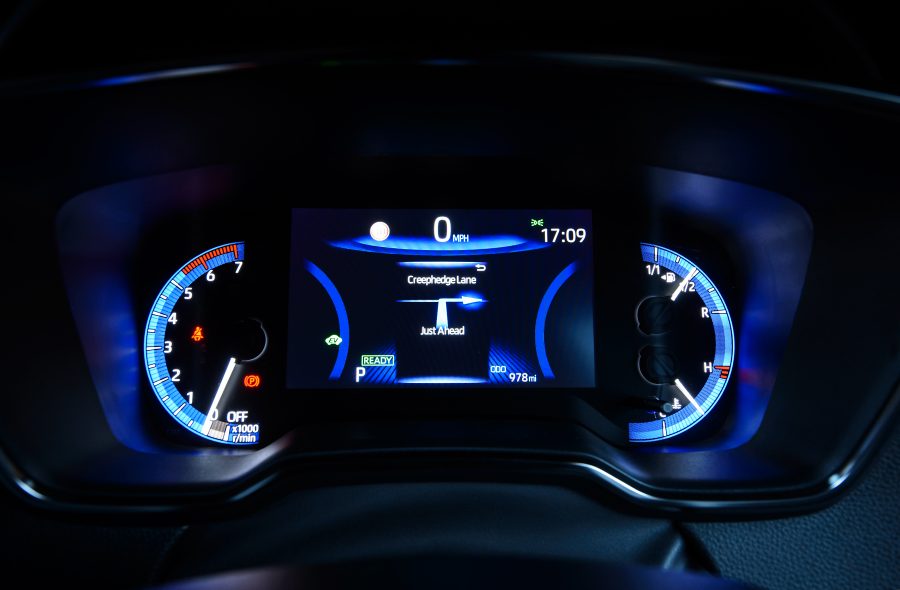
During the time that that car is in ‘Ready’ mode, you may hear and feel the internal combustion engine kick in; this is a normal part of the self-charging process. You might be tempted to switch on the radio to pass the time, or turn on other systems, but bear in mind these will consume small amounts of electrical power so it is preferable to leave them off.
Ensure the handbrake is on; there’s no need to go for a drive, although we must stress that this procedure should take place in a well-ventilated area – something to consider if you park your vehicle in a garage.
What if my Toyota isn’t a hybrid?
Our petrol and diesel cars only have a 12-volt battery, which provides the power to start the engine in addition to the other systems mentioned above. Regular start-up of the vehicle on conventional petrol and diesel engines needs approximately 20 minutes of running to put back into the battery what you remove on start up, so to maintain this battery we would suggest 60 minutes of running at least once a week.
Is there anything else I need to do?
Whether you own a hybrid or a Toyota equipped solely with an internal combustion engine, there are a few other easy car maintenance points that can ensure your Toyota hybrid remains healthy and happy during an enforced hibernation. Again, please adhere to the latest government advice regarding social distancing.
- Check the tyre pressures are fully inflated to the recommended level and top-up if necessary. It can be a good idea to repeat this process when you first drive your car after a long period of inactivity.
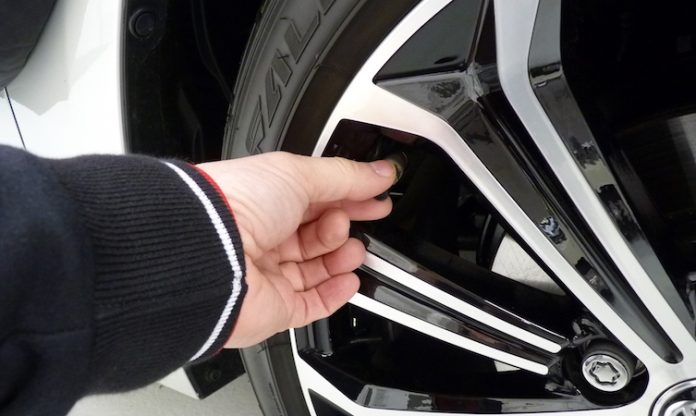
- Clean the car thoroughly inside and out. If you are storing your car in a garage, make sure the vehicle is completely dry before you put it away.
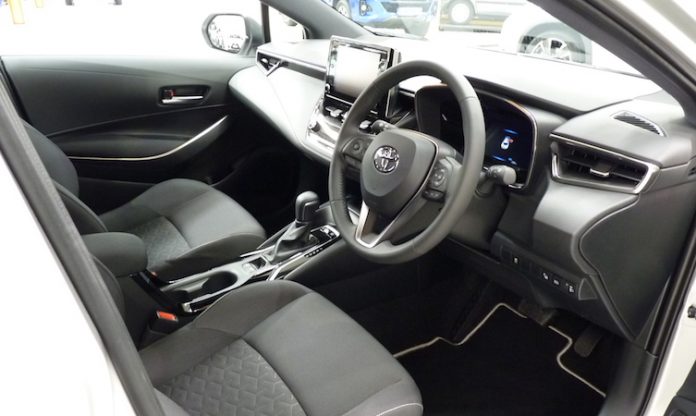
- If you do plan to store your car in a garage, ensure the chosen storage area offers plenty of ventilation. If the space is secure, you could consider opening one of the car’s windows a small way to ventilate the interior. If you do this, you might have to change your car alarm’s setting to prevent it setting off the intrusion sensor – please consult your car’s manual for more information.
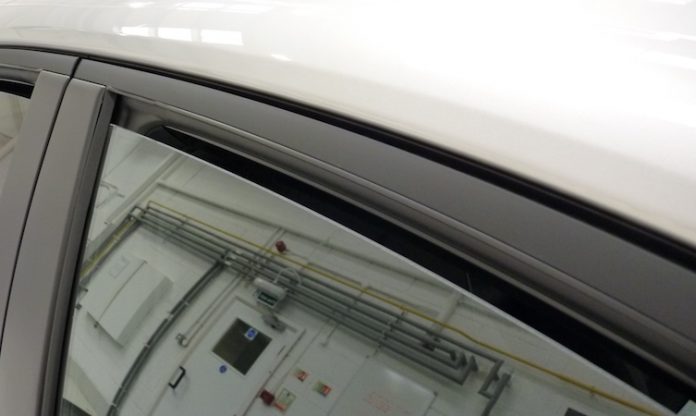
- It can be beneficial to leave the vehicle with the parking brake disengaged to prevent the brakes from binding, but only do this if you are certain the car is on level terrain and isn’t going to move. Ensure the transmission is set to ‘P’ for park and place wedges or chocks, if you have them, under the wheels.
- If you have a 12V battery trickle charger, or a solar panel charger, and are confident using them, then these are a good option to keep the battery fully charged while the vehicle is stationary for a period of time.
- If your vehicle is equipped with smart entry and start but the system isn’t operated for a long time, a battery-saving function will automatically be activated to prevent the electronic key battery and the 12-volt battery from being discharged. Battery depletion in the key is minimised by stopping the electronic key from receiving radio waves. On many models equipped with this system, it is possible to manually put the key into battery-saving mode, so please consult your car’s handbook for more information. If you aren’t planning to drive your car for a long time, consider putting the smart key in a safe place and not carrying it around with you in your pocket. This will prevent the car from ‘waking up’ unnecessarily should you happen to walk near it in your garage or driveway.
- If the vehicle will be kept on private property (such as inside a garage) for the duration of its storage, you could consider applying for a Statutory Off Road Notification (SORN). This informs the DVLA that the car is off the road and you will receive a refund of any remaining full months of tax. However, you won’t be able to drive your car legally until you tax it again, so it is only advisable if you are positive you won’t use your car for a long time. You can read more information about how to SORN your car here.
Read more Toyota GB’s latest statement on the Coronavirus (Covid-19) situation
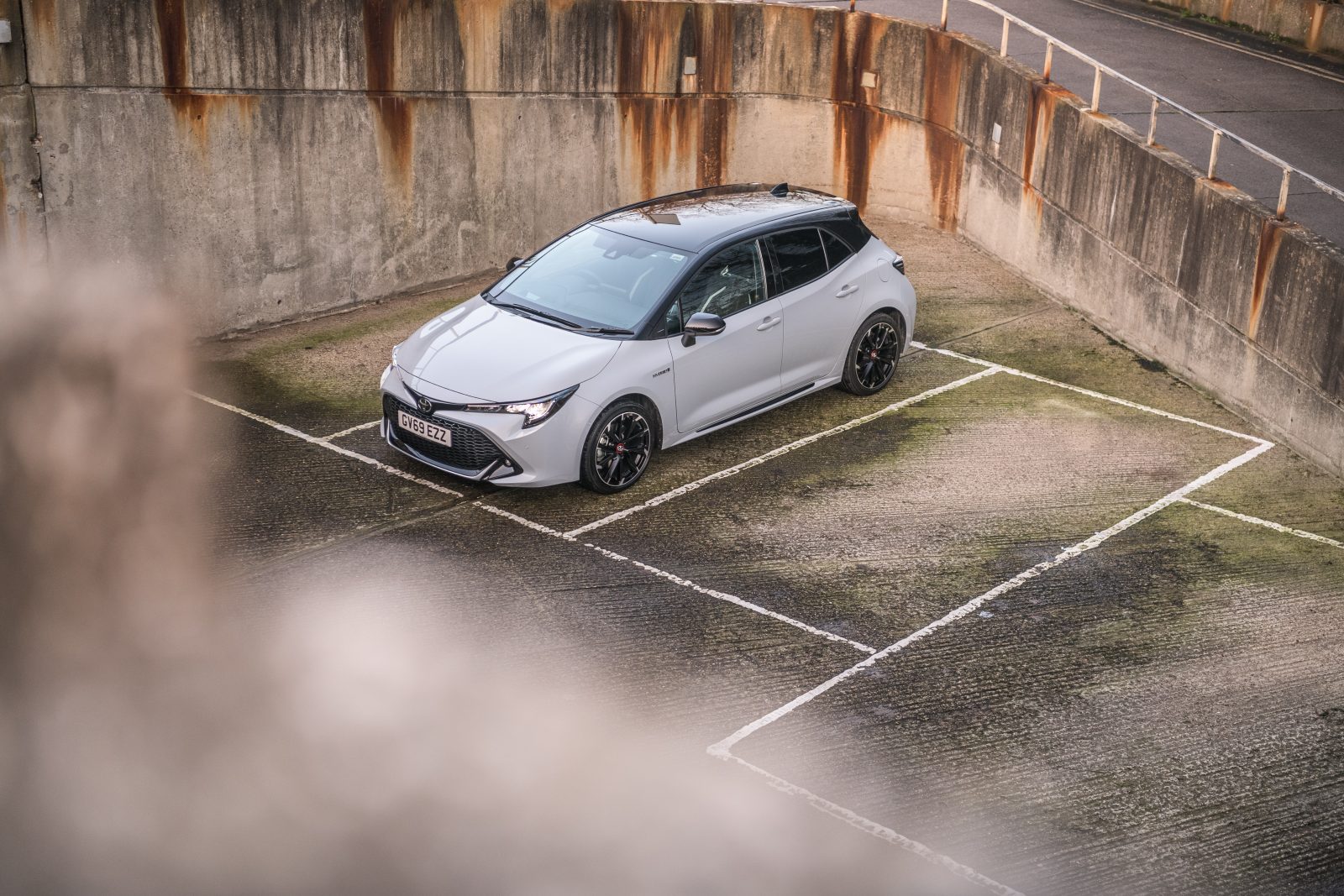


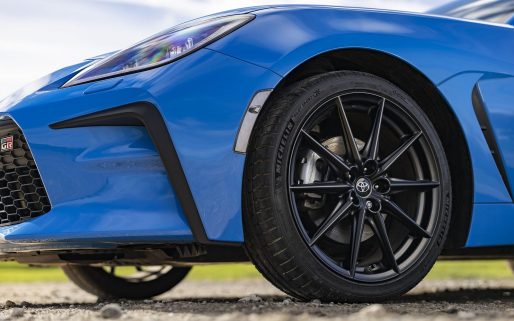

I have exactly the same experience with my 2010 Prius. Had none of these problems with my previous 2005 model so what changed?
Hi Tony, thanks for your comment.
The Hybrid technology has been continuously upgraded over the years and the powertrains are now much more powerful and capable of achieving motorway speeds whilst in EV mode. In current circumstances where we are making very short and infrequent journeys and putting a lot of strain on the vehicle through the heating systems etc, it may not give the starter battery chance to recharge efficiently. This can be the case in any vehicle, not just Hybrids. If you’re still experiencing problems after following the aforementioned instructions, please get in touch with your local Toyota Centre to allow them to take a look at this in person. Thanks.
I have not used my Auris Hybrid for just 4 days. When I tried to start it yesterday all I got was a strange noise and then everything was dead. I had a £350 service in November and the battery was reported to be 12.4v. It seems to me that the problem that Toyota listed in 2012 has not been properly fixed. My car is against a fence so I cannot jump start it or obviously take it to the Toyota agent. Is it worth buying a new battery instead of calling out the AA?
Hello Steve,
We would recommend calling out the AA and not performing any work on the battery yourself. Once it is up and running, make sure to take your Auris on a long journey so that the battery is given sufficient opportunity to recharge completely.
Thanks
With a trickle battery charger can it be connected to the jump start connections or only to the 12v battery,
Hi Terry, thanks for your comment.
We’d recommend connecting the trickle charger straight to the battery.
Thanks
HI
I have a 2019 Toyota CHR Hybrid and like all the complaints recorded I have the same problem with the battery going flat .
It is no use giving advice that one needs to charge it once a week and do longer trips and then commenting .
Thanks for getting in touch with us. We would recommend contacting our customer relations team directly to discuss changing or removing any personal details. You can contact the team directly on 0344 701 6202 or email them here: https://www.toyota.co.uk/contact-us/email-us
There must be a fix that Toyota can perform .
I have had many other cars in my life time but never had this type of problem .
How can any one recommend this car to anyone . Maybe Toyota should just say we have a design problem here is a Noco Boost GB40 power pack for each Toyota CHR Hybrit .
Please dont tell me to contact customer relations but tell me when this problem will be addressed .
Regards
Patrick Murphy
Hi Patrick, thanks for your comment.
We’re unable to offer any further information and cannot diagnose issues over social media. Either your local Toyota Centre or the Customer Relations team are your best ports of contact.
Thanks.
Hi im getting fed up with the battery goes flat after a couple of days stand still and with the covid rules u cant go for a drive for that length of time and ive had the AA 3 times and now with a forth and been serviced and im now think its a waste of money if you cant drive far!! The battery side of it must be looked into ! Ive only had mine over 2yrs and having no faith in a non reiable car 😣
Hi Debbie,
Thanks for your comment. We’re sorry to hear this.
In the current lockdown situation, people are encouraged to make fewer journeys, and these are often a quick couple of miles to the local supermarket at most. As with any combustion powertrain, this does not give the 12v battery adequate time to recharge. In the colder months, the increased use of heated seats and air conditioning puts additional strain on the vehicle. This is something that is not unique to Toyota. The decreased usage will impact upon all vehicles, including those with regular combustion engines.
We appreciate that it is difficult to go for more frequent, longer journeys in the current lockdown situation to fully charge the 12 volt battery, but there are some maintenance tips mentioned in the blog post above that can help to do this.
This includes putting the car in ‘Ready’ mode for about 60 minutes at least once a week, or, if the car is not being driven for longer periods, a solar power intelligent charger may be of use to maintain the battery.
Thanks.
I have a 2017 Auris, purchased in 2018. I’ve had no problems with the car and have a commute five days per week, five miles each way, unchanged during lockdowns as I’m a key worker.
I took the car for a service plus mandatory recall engine management software update in September 2020. Ever since, I’ve had a discharging battery problem. I have to drive my car at some point during the weekend – if I leave it from Fri evening to Mon morning without moving the car, it will not start without a bit of electical help from my wife’s Nissan. Is this just a coincidental deterioration in a relatively young 12v battery, or is the software update to blame?
Hi G P Hardy,
Thanks for getting in touch. We’re sorry to hear this.
We would recommend re-contacting the Toyota Centre at which the software update was carried out, as they will be able to investigate this further and determine if there is an issue that needs to be resolved.
Thanks.
Can they roll back the software update? It seems to have reintroduced a fault from earlier auris models.
Either that or something else was done during the service to cause this problem.
Hi G P Hardy,
Thanks for your reply.
This will be something to discuss with the Toyota Centre at which the work was carried out.
They can assess your vehicle in person and look into any possible issues.
Thanks.
A useful article as I have just had to call out the AA to get my RAV4 AWD 2019 started.
I tried putting a trickle charger directly onto the 12v battery but the charger kept maxing out at 8 amps then cutting out. I could also hear a buzz/hum from the dash or maybe the fuse box in the engine so decided I was probably doing more harm than good.
It appears the proper way to start the vehicle if the 12v battery is flat is by connecting the 12v connection in the fuse box (found on the right hand side of the engine compartment as you stand in front) up to a portable battery pack or another car battery. If there isn’t 12v ( and a high current) at the fuse box connection the car will not start. Probably like most others I thought the 12v actually started the car but it doesn’t, not directly anyway. I was also advised that disconnecting the 12v battery is a bad idea as it affects other systems, it would be interesting to know what systems?
I am however very puzzled as to why my charger kept maxing out. Had my initial attempt at starting the car put it into ignition mode even though no lights were showing and it seemed dead? The battery was only registering about 4-5v so very flat. The door lock struggled to open and the wing mirrors only just managed to fold open but it was very cold but dry.
Incidentally it had not been used for about 3 weeks but I won’t leave it so long again.
Hi Anthony,
Sorry to hear that. Unfortunately we can’t advise on the faulty operation of your trickle charger, but there certainly should not be a buzz/hum from the dash. We recommend getting the trickle charger and its connections verifired by a trained professional.
The 12v battery in your hybrid keeps all of the electrical systems alive while your car is switched off, like the alarm, the key fob sensors, the clock, and the memory in many of the computer systems.
Thanks
My experience – the 12v in my Prius started failing in January 2021, 14 months after being replaced. I took it back to the showroom who tested it and replaced it under warranty. The warranty is for three years. Good service from Toyota.
I have a CH-R, 2 years old last December. Like most here, my journeys have been few and far between during lockdown and the recent sub zero temperatures day after day have rendered the vehicle totally dead. I had no idea this was an issue, so something of a shock and eye opener. Makes me wonder how a Tesla might fare, without even the benefit of a petrol engine? Whilst I appreciate small journeys may not be enough to fully maintain a battery, I wouldn’t and didn’t expect it to go dead within about 5 days of inactivity. If this technology is supposed to be the future, it’s not getting along too well, is it? Hopefully Green Flag will be able to boost it enough for me to be able to sit outside in Ready mode for an hour this afternoon!
Hi Neill,
Thanks for getting in touch with us. We’re sorry to hear this.
The current lockdown situation has meant that people are only allowed to make shorter journeys, and these also tend to be fewer in number.
This does not give the 12 volt battery enough time to fully recharge, and this is the same with any combustion powertrain.
In the colder months, the increased use of heated seats and air conditioning puts additional strain on the vehicle. This affects vehicles from all brands.
The advice in the above blog post can help maintain the 12 volt battery, including putting your vehicle into ‘Ready’ mode for 60 minutes at least once a week (as you mention), taking more frequent, longer journeys when allowed, or investing in a solar-powered intelligent charger.
Thanks.
Having been told to run the car for one hour twice a week because the battery kept going flat I did this last night at 5 o clock only to forget all about it Woke up at 8 this morning and the first thing came into my mind was oh god my car has been on all night, Anyway it was still running and has been OK today so beware of doing this doesnt seem to have used much petrol either,